Typical features of plants with winter interest include fascinating bark and vivid berries. For example, the coral bark Japanese maple boasts bright-reddish bark and the paperbark maple peeling coppery bark, while the winterberry has bright red berries. However, trees with winter foliage bring refreshing greenery to the winter landscape.
Evergreen trees, with their leaves that remain on the branches year-round, are the classic winter choice. Although conifers, with their needles and cones, may come to mind, other evergreens have broad, flat leaves.
Deciduous trees habitually develop abscission layers in the fall, enabling fall foliage to separate easily from branches. However, the species noted here sometimes display marcescence, meaning that they retain dead leaves until new ones develop in the spring.

- Trees with Appealing Winter Leaves
- How to Plant Trees
- When to Plant Trees with Winter Foliage
- European Beech (Fagus sylvatica)
- Balsam Fir (Abies balsamea)
- Japanese Camellia (Camellia japonica) – A Flowering Tree with Winter Leaves
- Evergreen Dogwood (Cornus capitata)
- Live Oak (Quercus virginiana)
- Witch Hazel (Hamamelis virginiana) – A Cheery Tree with Winter Leaves
- American Hornbeam (Carpinus caroliniana)
- Hollywood Juniper (Juniperus chinensis 'Torulosa')
- Shore Pine (Pinus contorta) – A Contorted Tree with Winter Leaves
- Yoshino Japanese Cedar (Cryptomeria japonica 'Yoshino')
- River Wattle (Acacia cognata)
- Strawberry Tree (Arbutus unedo) – A Fruit-Bearing Tree with Winter Leaves
- Chinese Elm (Ulmus parvifolia)
- Scots Pine (Pinus sylvestris)
Trees with Appealing Winter Leaves
There are diverse options for trees with attractive winter foliage, as well as perennials for winter, that you can choose for a pretty landscape when the rest of the ground is bare. Once you make your selection, follow these steps to invigorate your winter garden.
How to Plant Trees
Dig a hole that’s approximately three times wider than the root ball but has the same depth. Remove the tree from its container before placing it in the hole, or settle a balled-and-burlapped tree, then cut away its covering. Gently loosen twisted roots.
Fill the hole halfway with removed soil, then pour in water to remove air pockets. Finish backfilling and add more water. Cover with mulch and water well.
Plant several of these trees for privacy from neighbors in your back or front yard. Be sure to allow plenty of space between them to allow for growth. It may take some time for you to have a complete natural privacy fence.
When to Plant Trees with Winter Foliage
Some gardeners argue for the spring, and others the fall. With spring planting, the tree has the whole summer to become settled. However, the young plant must put down roots and produce leaves simultaneously.
Although there may be a smaller selection of plants in the fall, deciduous species can focus on establishing their roots. Evergreen trees maintain the same water needs, though, which they struggle to fulfill with frozen ground.
There’s also the risk of winter damage if you plant too late. Ultimately, the decision depends on climate, species, and gardener.
European Beech (Fagus sylvatica)

This wide-growing deciduous tree’s toothed leaves turn golden-yellow in the fall but often hang around, brown, until the spring. Beechnuts are edible but tart. As a monoecious species, the beech bears male and female flowers in the spring.
Propagate it with seeds, placing them briefly in cold storage unless they’re fresh. European beeches prefer full or partial sun and well-drained soil. Use them as specimen or shade trees.

Distribute mulch, and water your tree upon planting, in late fall, and during droughts. Strew granular fertilizer annually, leaving a gap around the trunk. Prune any suckers.
Balsam Fir (Abies balsamea)
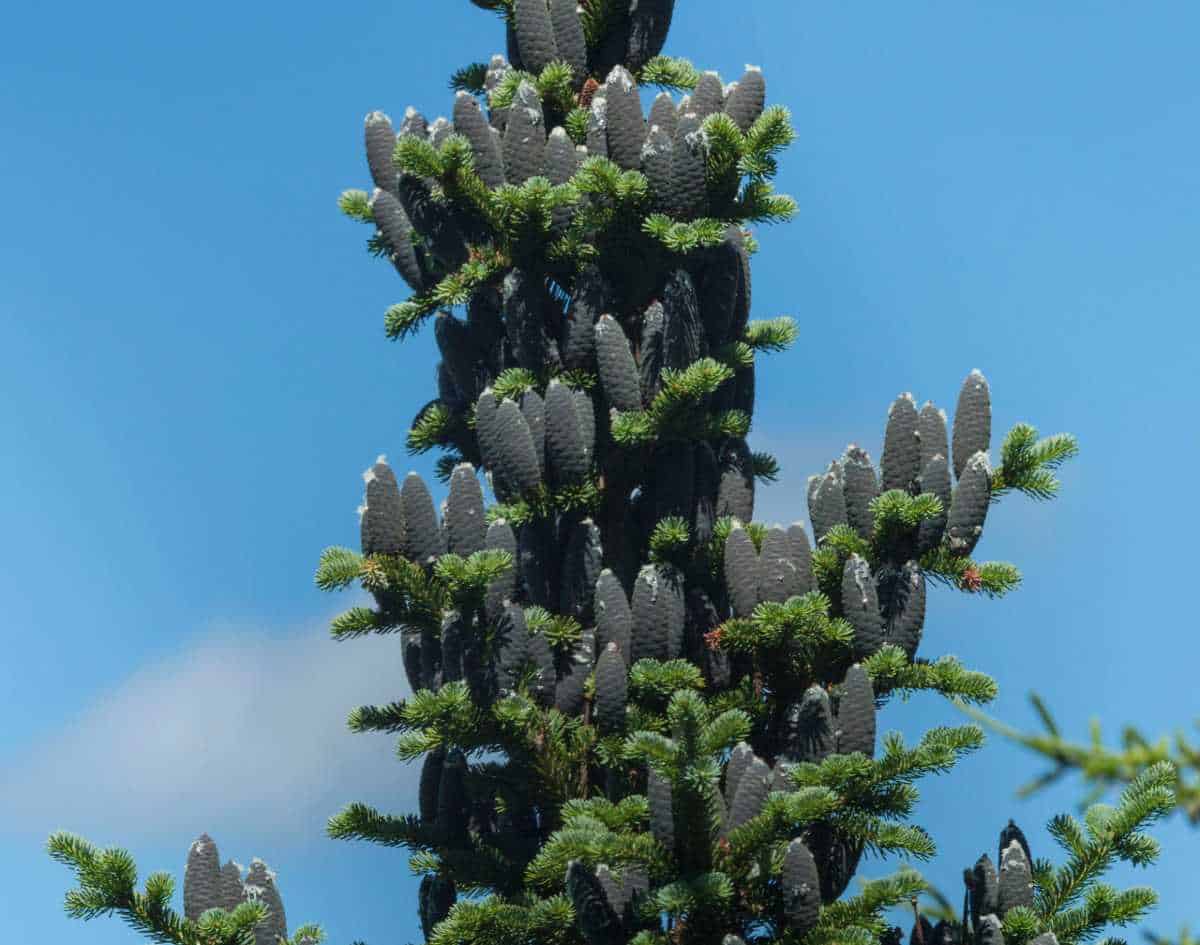
This tall evergreen forms a Christmas tree shape with dense needles and a spicy fragrance with cones that sit vertically on its branches. Use the balsam fir as a specimen plant, screen, or windbreak.
Install a bare-root or balled-and-burlapped tree in the fall or spring and a container-grown plant anytime except during a hot, dry period. The balsam fir thrives in a sunny spot, potentially with light morning shade. It favors moist, acidic, cool, well-draining soil.
Water young plants deeply once a week. Feed them balanced fertilizer annually in the spring. Older trees require less-frequent watering and fertilizing.
Japanese Camellia (Camellia japonica) – A Flowering Tree with Winter Leaves

This compact evergreen has glossy leaves and beautiful, large winter blooms. Fall planting is ideal, although you can plant a container-grown tree in the spring if you water it regularly. Find an elevated site with protection from the wind and you will enjoy winter flowering trees all season.
This camellia survives in sun or shade. It does best when it receives winter sunlight but protection from the summer sun. Add organic matter to fast-draining, acidic or neutral soil, and distribute pine bark mulch.
Water camellias regularly during their first two or three years, especially in hot weather. Feed camellia fertilizer three times per year during the first three growing seasons, then twice a year.
Evergreen Dogwood (Cornus capitata)
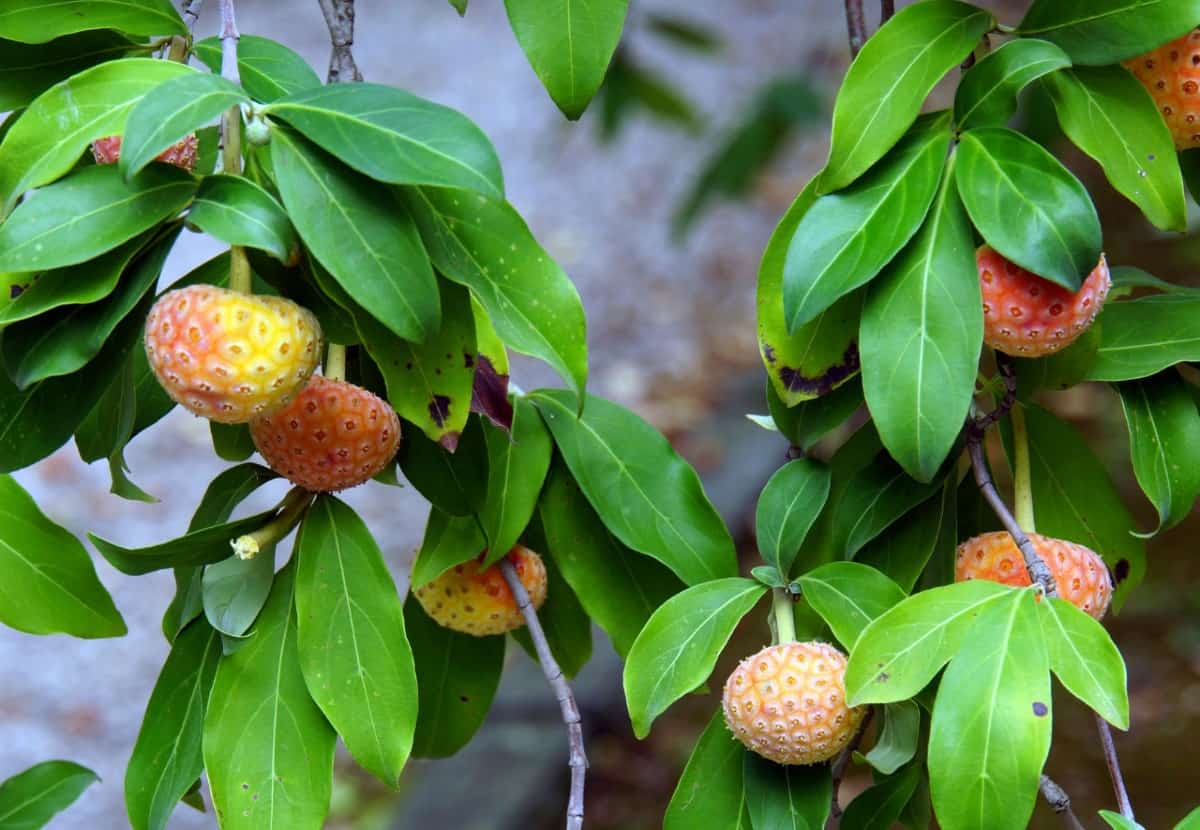
The stunning redtwig dogwood, unfortunately, lacks winter foliage. Thankfully, the evergreen variety’s dark-green leaves last year-round. They do, however, occasionally turn red or purple and partially drop in the fall.
This plant also boasts small, fragrant flowers surrounded by petal-like bracts. Its round, reddish fruit—actually many tiny fruit fused together—is edible and sweet.
It takes eight to ten years for a dogwood grown from seed to flower, so consider using cuttings instead for your shrubs and bushes for winter landscaping a little earlier. This dogwood flourishes in sun or shade and moist, acidic clay or loam.
This dogwood requires lots of water. Apply organic tea in its first year. Afterward, spread granular fertilizer in February or March and again three months later.
Live Oak (Quercus virginiana)

This hardy oak’s toothed leaves are, unusually, evergreen. If you have the patience, propagate it with acorns in the fall to enjoy these amazing trees for shade.
The live oak thrives in partial or full sun. It prefers acidic loam, particularly with plenty of compost and manure. Spread mulch, and prune the tree annually for the first three years to restrict growth to one main trunk.
Water it weekly if there’s less than one inch of rain. Although fertilizer is unnecessary, you may add 12-6-6 or 12-4-8 fertilizer in early spring.
Witch Hazel (Hamamelis virginiana) – A Cheery Tree with Winter Leaves
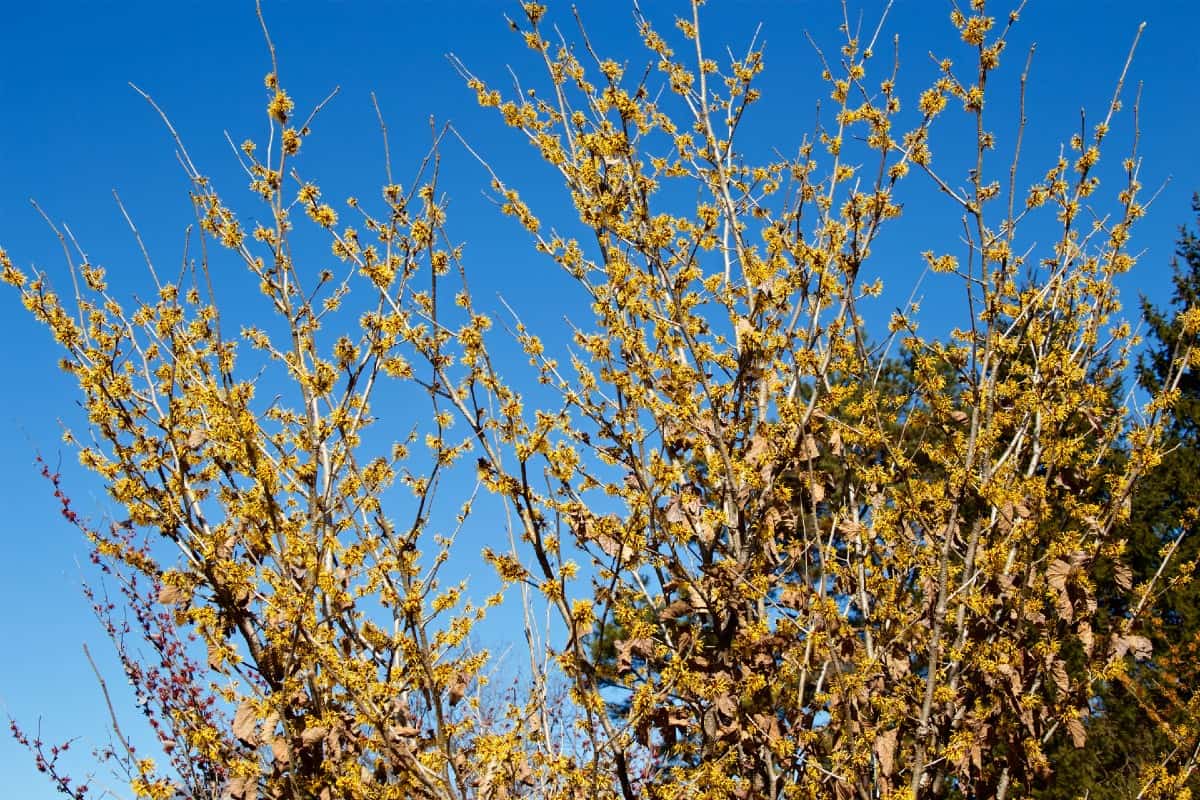
This small tree displays fragrant, ribbon-like yellow flowers in the winter, often at the same time as its fruit and leaf buds. Place witch hazel in a border or mixed hedge or use it as a specimen plant. It’s traditionally propagated via grafting.
This plant favors partial to full sun and moist, humus-rich, well-drained soil. Water it regularly during its first growing season and subsequent summers, and distribute mulch.
Apply balanced granular, liquid, or stake fertilizer according to package directions—or organic fertilizer, such as manure.
American Hornbeam (Carpinus caroliniana)

This deciduous shade tree’s trunk and branches resemble muscle tissue. As one of the pretty fall trees, its leaves display vivid colors in autumn. Use the American hornbeam as a specimen plant, or place several trees close together as a living fence.
Plant seeds or a young nursery plant in the spring. This species does best in partial to full shade and fertile, moist, well-draining soil—ideally, acidic to neutral loam.
For the first two to three years, keep the ground moist, then soak regularly during dry spells. This hornbeam does not need fertilizer, but mulch is beneficial.
Hollywood Juniper (Juniperus chinensis ‘Torulosa’)

This hardy evergreen tree or large shrub boasts twisted branches, dense needles, violet-blue berries, and exfoliating bark. Use this dramatic tree as a specimen plant.
Propagate the Hollywood juniper with stem cuttings or a nursery plant. It prefers full sun and handles any fast-draining soil that’s not too wet.
Water your juniper weekly during its first year, then only during severe droughts. Cover with mulch, and add compost or slow-release fertilizer every spring for the first two to three years.
Shore Pine (Pinus contorta) – A Contorted Tree with Winter Leaves

Another tree with a windswept appearance, this evergreen conifer has pairs of stiff yellow-green or dark-green needles, pale-brown seed cones, and scaly reddish-brown bark.
Propagate these fast-growing, hardy evergreen pine trees via seeds. Put it in full sun and acidic or neutral, well-drained loam or sand.
Water the shore pine deeply once a week during its first year, then reduce watering. Distribute slow-release pine fertilizer two to three times during the first growing season. Afterward, fertilizer should no longer be necessary.
Yoshino Japanese Cedar (Cryptomeria japonica ‘Yoshino’)
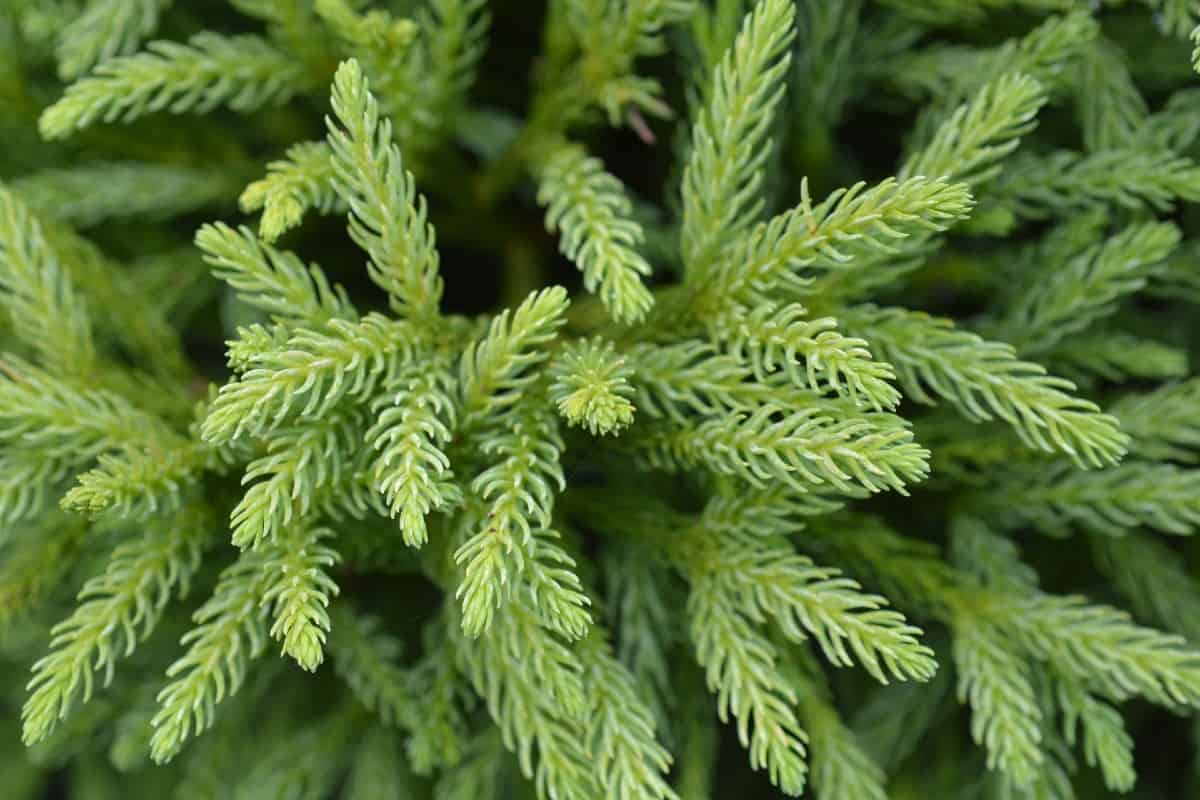
This evergreen shoots up into a pyramid shape with horizontal branches. It has lime-green to bluish-green needles and peeling bark. Propagate this tree with mature wood cuttings.
Use it as a specimen plant, place two trees flanking a doorway, or employ several as a screen. Find a sunny or lightly shaded site with protection from the wind.
This species does best in acidic, moist, well-draining, humus-rich soil. In intense heat, water at least once a week. Feed all-purpose fertilizer in early spring.
River Wattle (Acacia cognata)
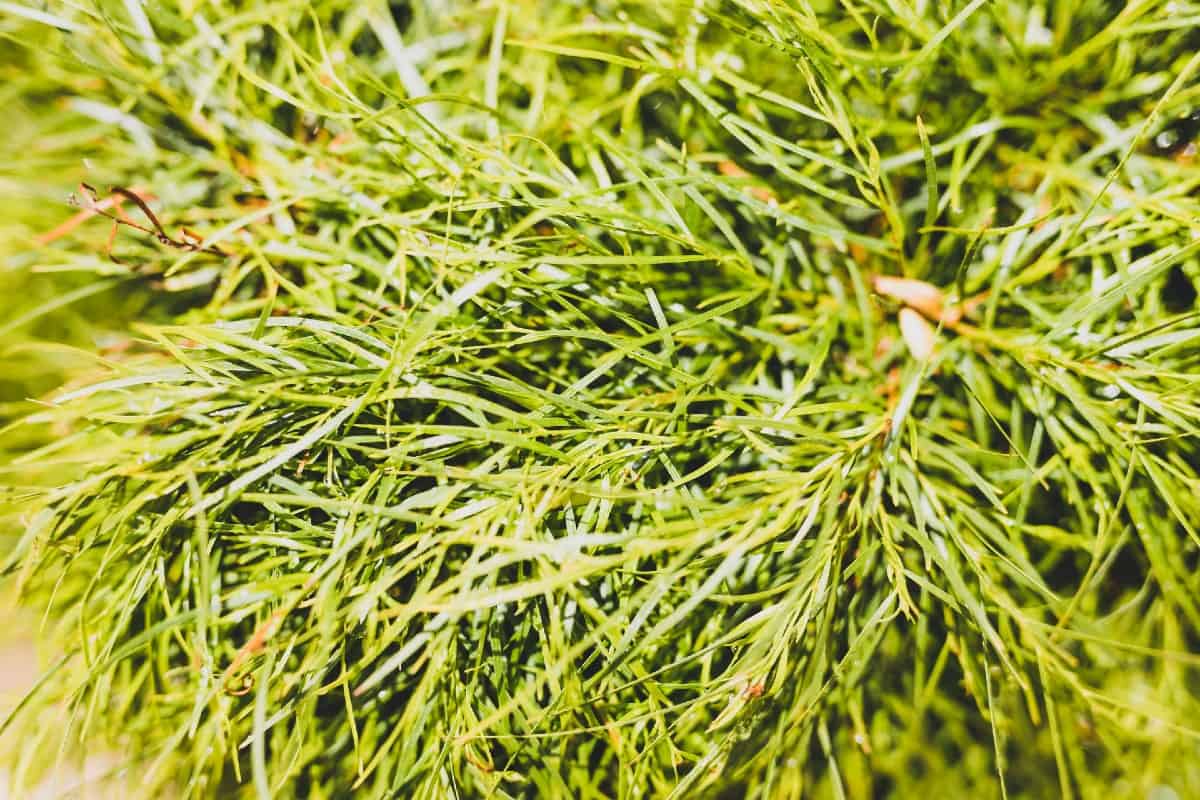
This fast-growing small tree or shrub—native to Australia—has narrow, drooping leaves on its weeping branches. The leaves may start red-tinged but mature to emerald-green. The wattle produces pairs of small, pale-yellow flowers in the spring.
It suits a hillside or rock garden or the bottom of a dried-out stream. Propagate this plant using cuttings. Place it in fast-draining soil and full sun to light shade.
Water your plant regularly, particularly in the summer. It does not require much fertilizer.
Strawberry Tree (Arbutus unedo) – A Fruit-Bearing Tree with Winter Leaves
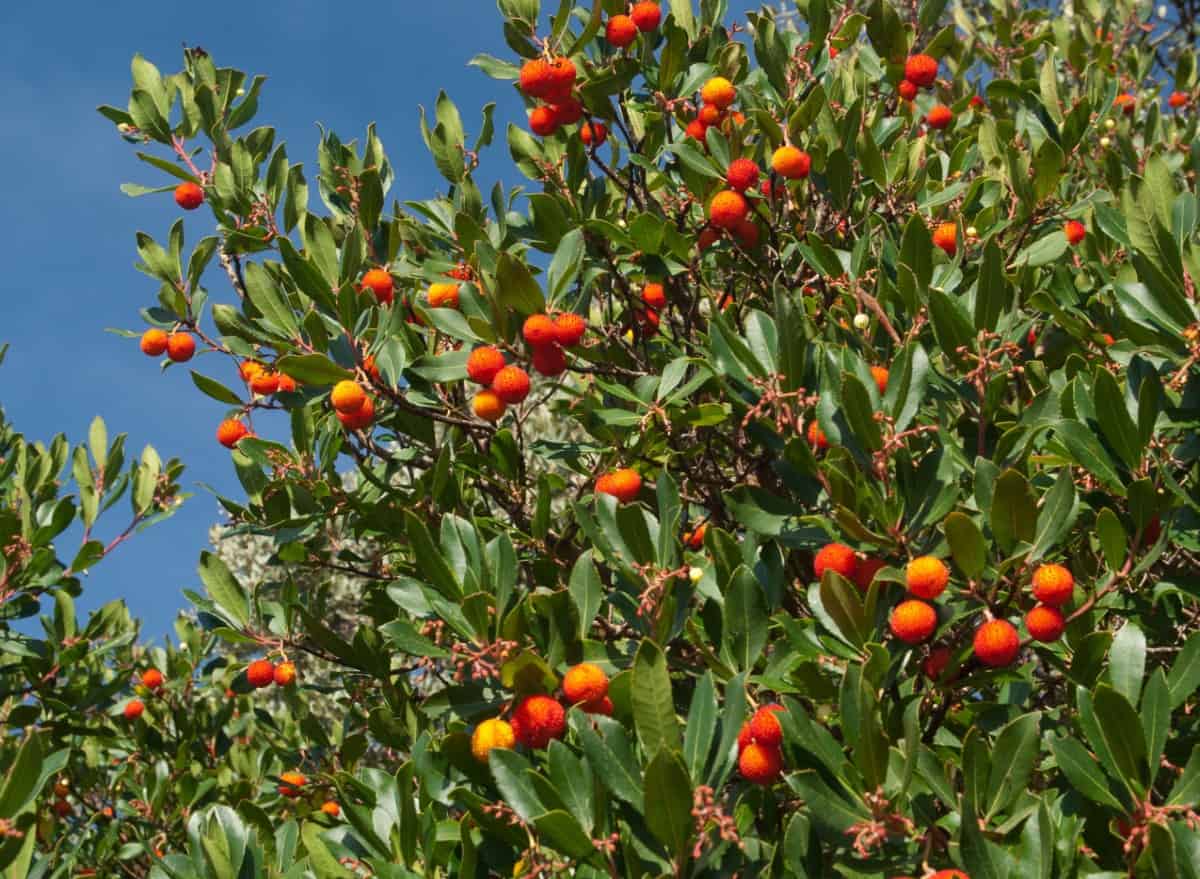
This small tree or shrub has shiny, dark, oblong leaves and bell-shaped pink or white flowers in the fall and winter. Its round fruit starts yellow but turns red by the fall. They’re edible but not particularly tasty, although they work well in jam or jelly.
Propagate the strawberry tree with seeds or cuttings. It thrives in full or part sun and acidic or neutral soil. Water the plant regularly during its first year and spread mulch. It does not need fertilizer.
Chinese Elm (Ulmus parvifolia)
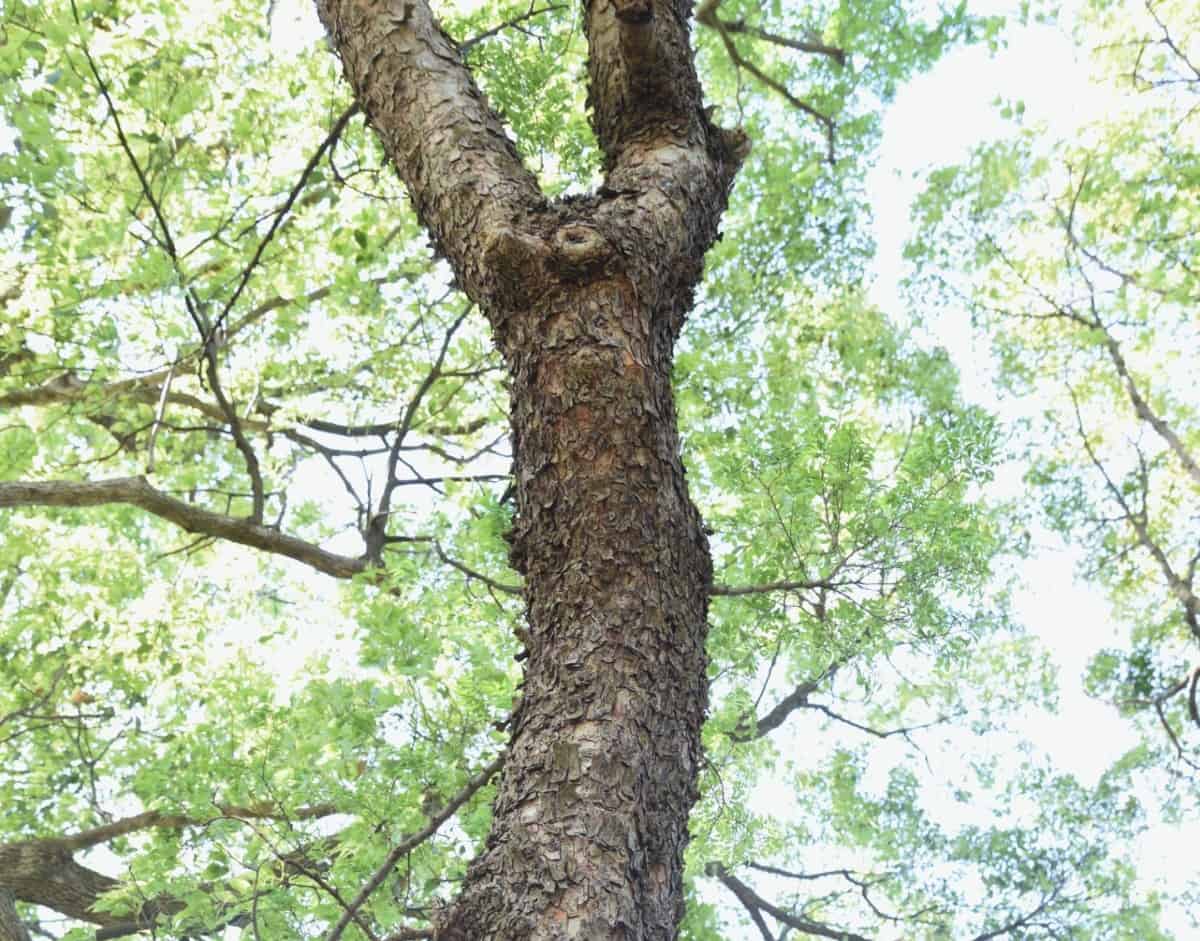
This broad, fast-growing tree develops in a weeping manner with glossy, toothed leaves. The Chinese elm is also one of the trees with interesting bark that sheds. This species is semi-deciduous, meaning that it keeps its leaves over the winter in mild climates.
The Chinese elm bears inconspicuous flowers in late summer, then green fruit. Use it as a specimen, street, or shade tree. Install a container-grown elm anytime, or a bare-root or balled-and-burlapped tree in spring or late fall.
This elm favors full sun and well-drained soil. Water your plant deeply in hot, dry weather, and spread mulch. Feed young trees balanced fertilizer in the spring starting in their second year. Older trees benefit from less-frequent feeding.
Scots Pine (Pinus sylvestris)

This coniferous evergreen has a long, straight trunk with flaking bark. It bears pairs of long needles and cones with diamond-shaped scales. The Scots pine is often used for Christmas trees but also suits a large landscape.
Propagate it with hardwood stem cuttings, or raise it from seeds, first placing them in the fridge for four weeks. The Scots pine flourishes in full sun and well-draining, acidic soil.
Water only in warm weather with little rain, but make sure to apply mulch. Slow-release 15-5-10 fertilizer in the spring can be helpful but is not essential. To promote thicker growth, pinch off new shoots in the spring.
When striving to increase your garden’s winter interest, there are several possible routes. You could focus on fruit, flowers, branch shape, or bark, but leaves remaining throughout the winter add a unique feature.
Besides classic evergreens, trees with winter foliage include deciduous trees that, unusually, keep their leaves until the springtime. Whether they have snow-lined needles or brown leaves stark against the snow, these species look stunning in the home garden or an arboretum.
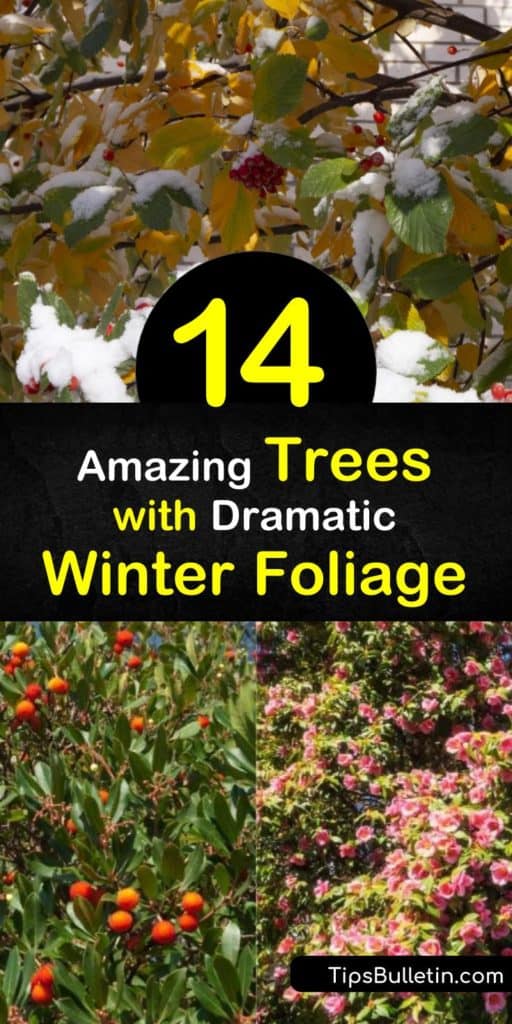
If you found these tree tips helpful, please share these winter garden ideas with your friends on Facebook and Pinterest.